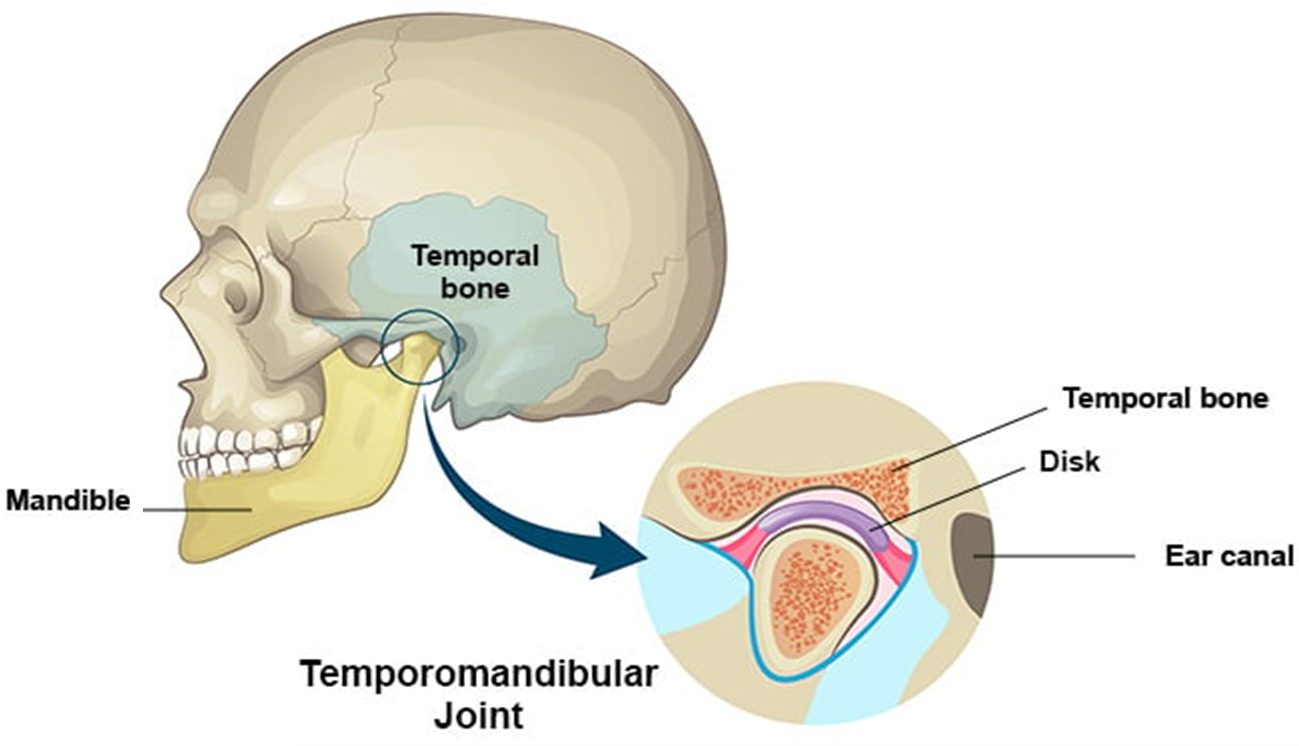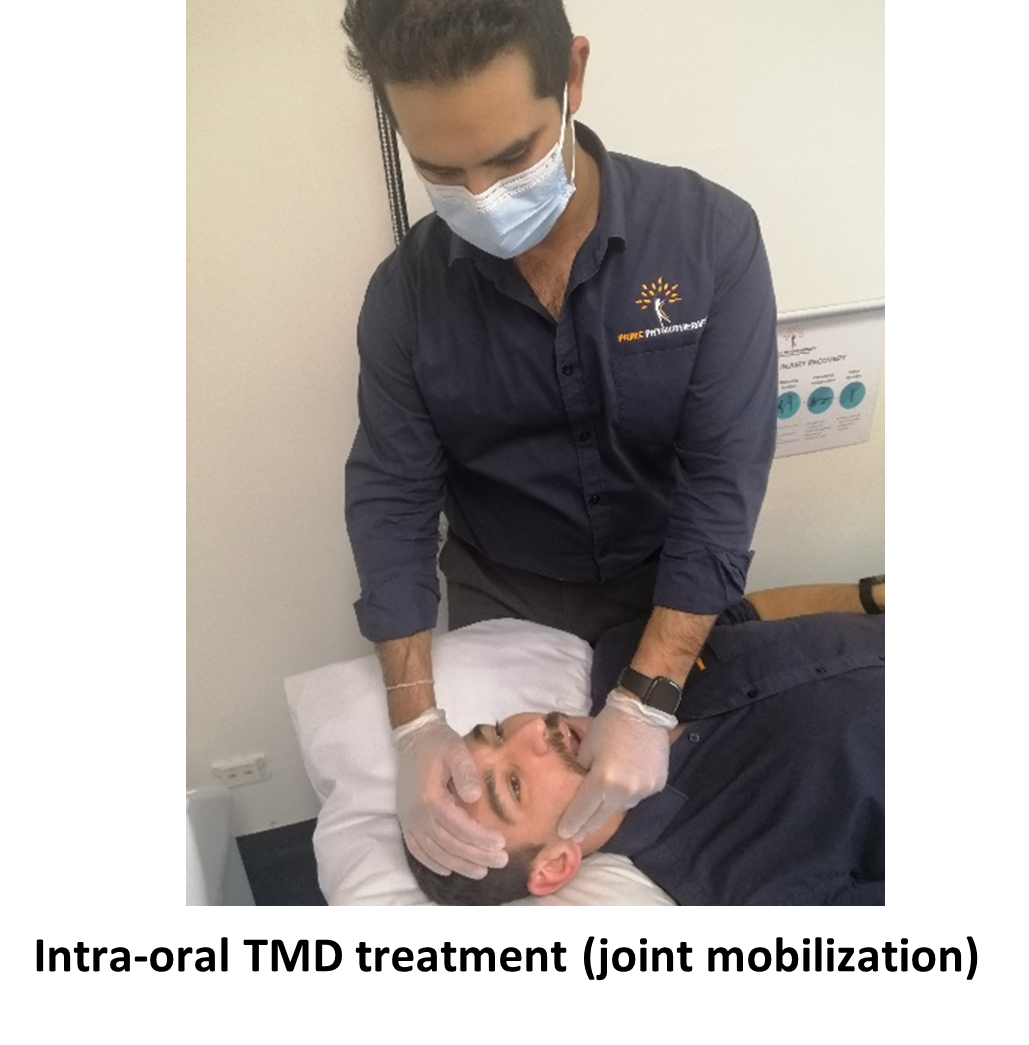
The Temporomandibular Joint (TMJ):
The TMJ is the joint between the jaw bone (mandible) and the skull bone (temporal bone). The TMJ is used when talking, eating, yawning, singing etc. Like any joint in the body, it is very common for the TMJ to get overused and cause pain.

What is Temporomandibular Disorder (TMD)?
TMD is an irritation of the TMJ that can cause pain in the jaw and can reduce jaw mobility. It can be caused by a number of structures:

TMD can also be associated with headaches that refer pain into the head.
What causes it?
In most cases the cause is unknown as to how TMD develops. However, it can be due to muscle weakness, joint stiffness, jaw clenching, teeth grinding, acute trauma or other health conditions.
How can physiotherapy help?
Physiotherapist can assess and diagnose TMD by performing a number of assessments such as range of motion tests, palpation and strength tests. Physiotherapists can also provide manual therapy techniques to relieve pain, reduce muscle tightness and improve jaw mobility. Manual therapy techniques can be either performed on the inside or outside of the jaw. Physiotherapists can also prescribe home exercises to improve jaw mobility, posture and strength.

If you are experiencing jaw pain, we can help! Call us or book online today.